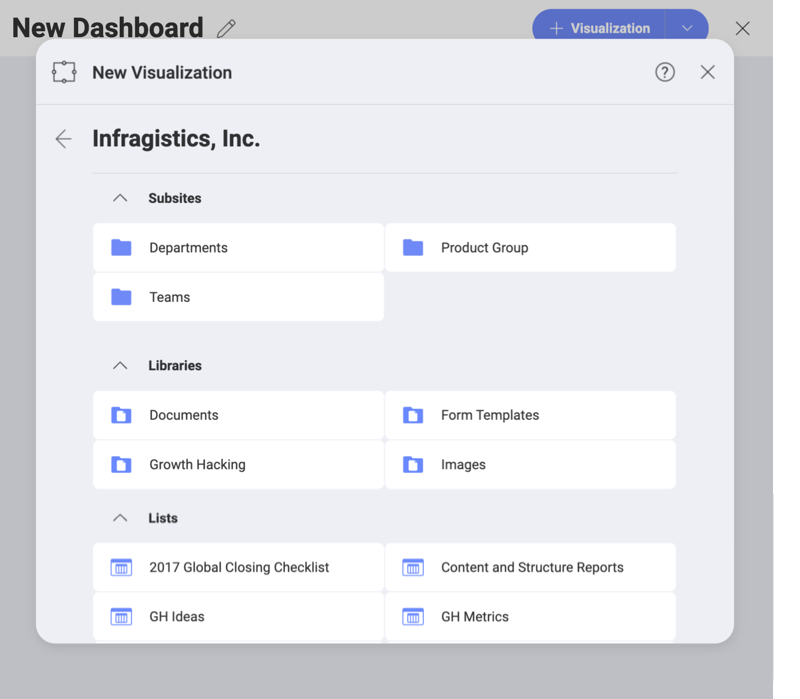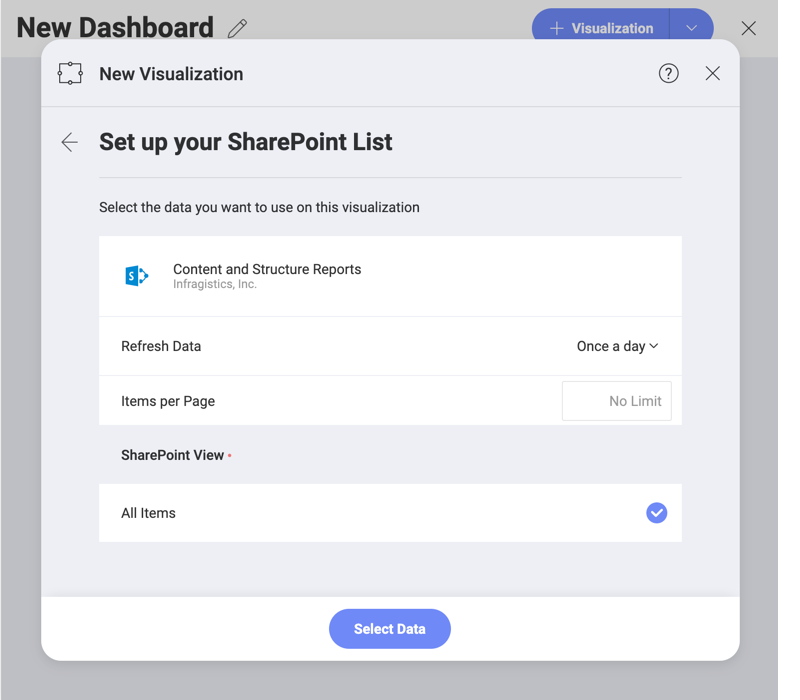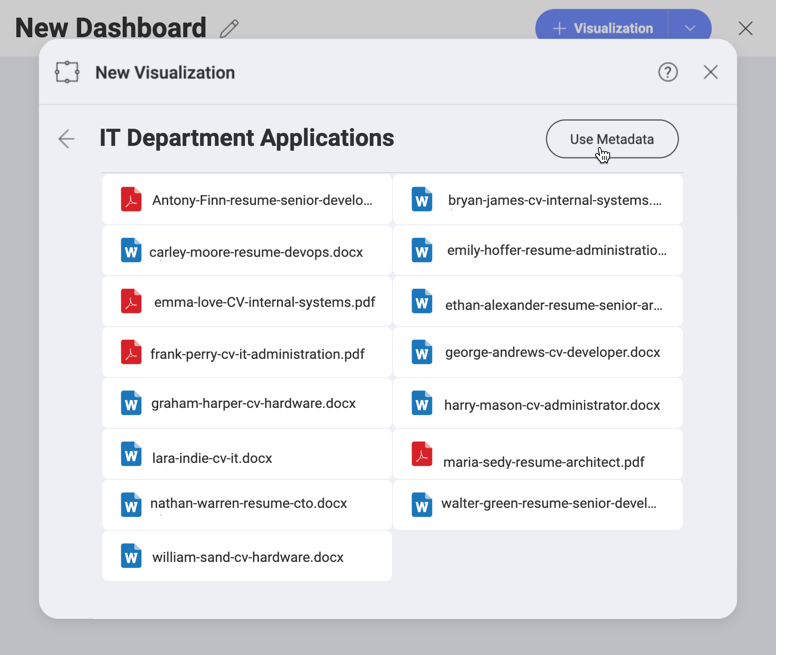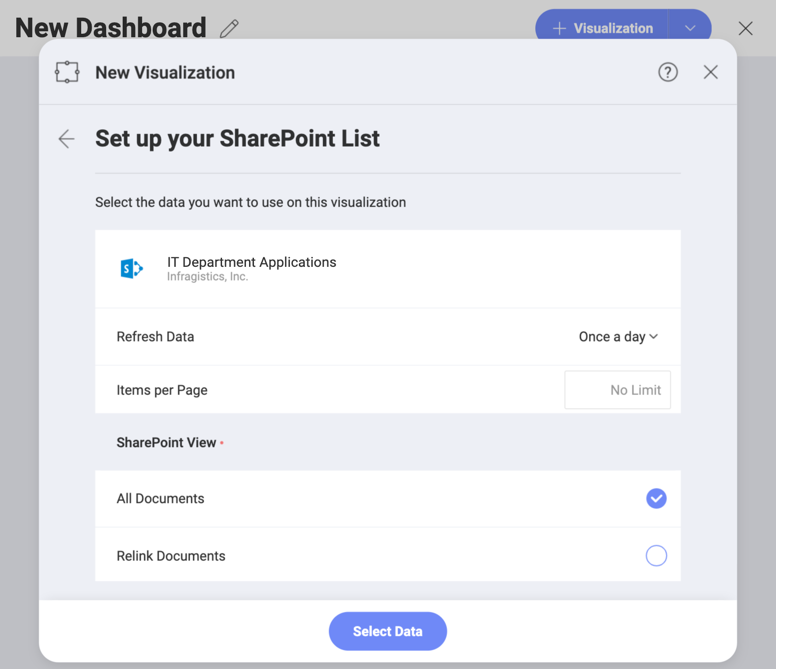
Upon selecting SharePoint, you will see the following log in prompt.

Here you can choose to use the root SharePoint site in your Office365 account. You can also add a subsite URL to directly start browsing its contents. Once connected to a SharePoint subsite, you will be able to quickly access it through your list in the Select a Data Source dialog.
When working within Reveal, you will be able to use a wide variety of files from your SharePoint site (subsites):
Spreadsheets, JSON files & tabular data (Excel - .xls, .xlsx; CSV, TSV), which you can use dynamically within Reveal to create chart visualizations.
Other files (including images or document files such as PDFs, texts, etc.), which will be displayed in a preview mode only.
After logging in, you can start browsing your SharePoint data - subsites, libraries, folders, lists, and files (as shown below).

To create a dashboard, you can use the SharePoint data types, listed below.
Files stored in your SharePoint site - see Supported files above.
SharePoint lists - you can use the items from all types of SharePoint lists. Set up a SharePoint list by selecting a SharePoint View.

Metadata of Document Libraries - the metadata of a SharePoint library is data about files stored in this library, e.g. files' size, names, type, date of creation/upload. It can be used for analysis of the library.
For example, you may want to provide insight in which period of the year your IT department receives the highest interest from job applicants? Find the document library, where you have uploaded the resumes of the applicants, and use its metadata to create a chart displaying how files in that library evolved over time.
To do this, you need to open the library and click the Use Metadata button at the top right corner.

Here you will find the metadata of the library presented as SharePoint lists that you can choose from.
